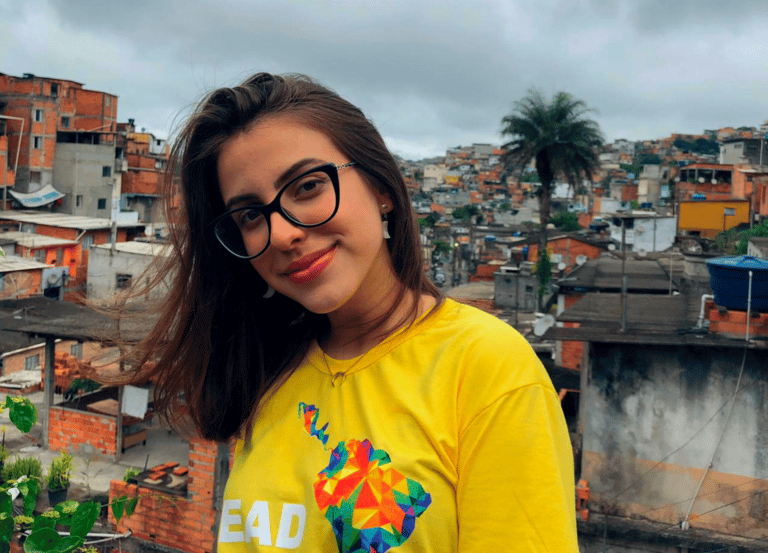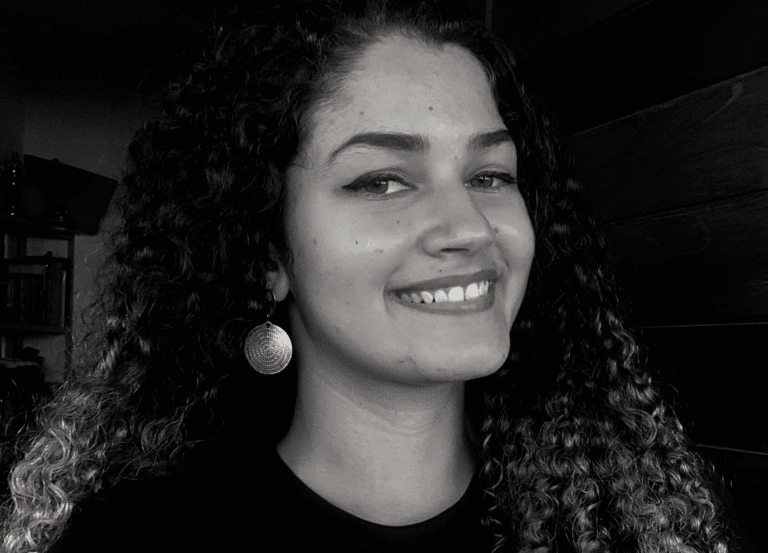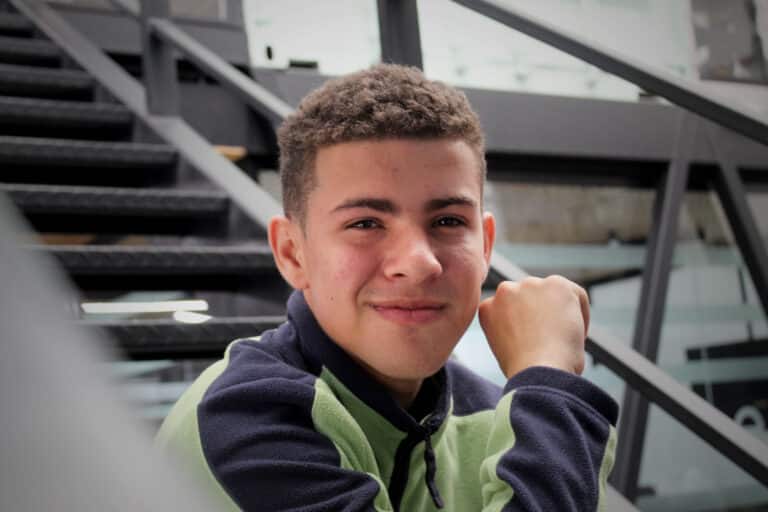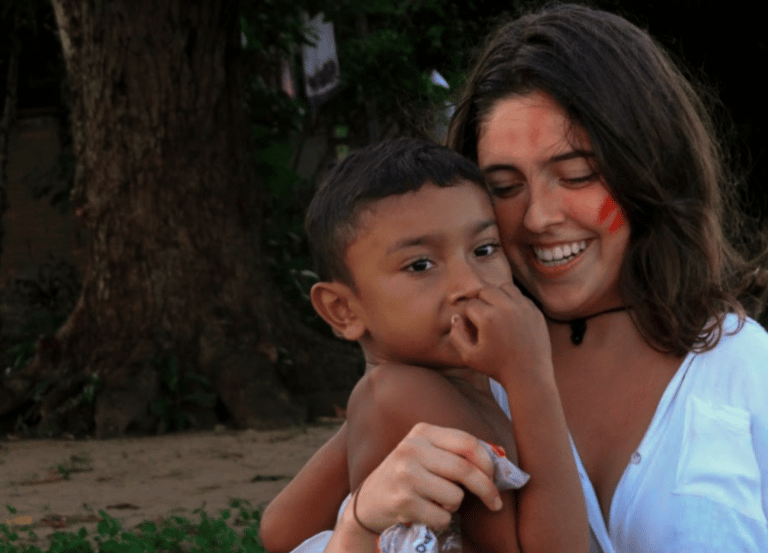Programa de apoio a jovens negros, indígenas e da periferia
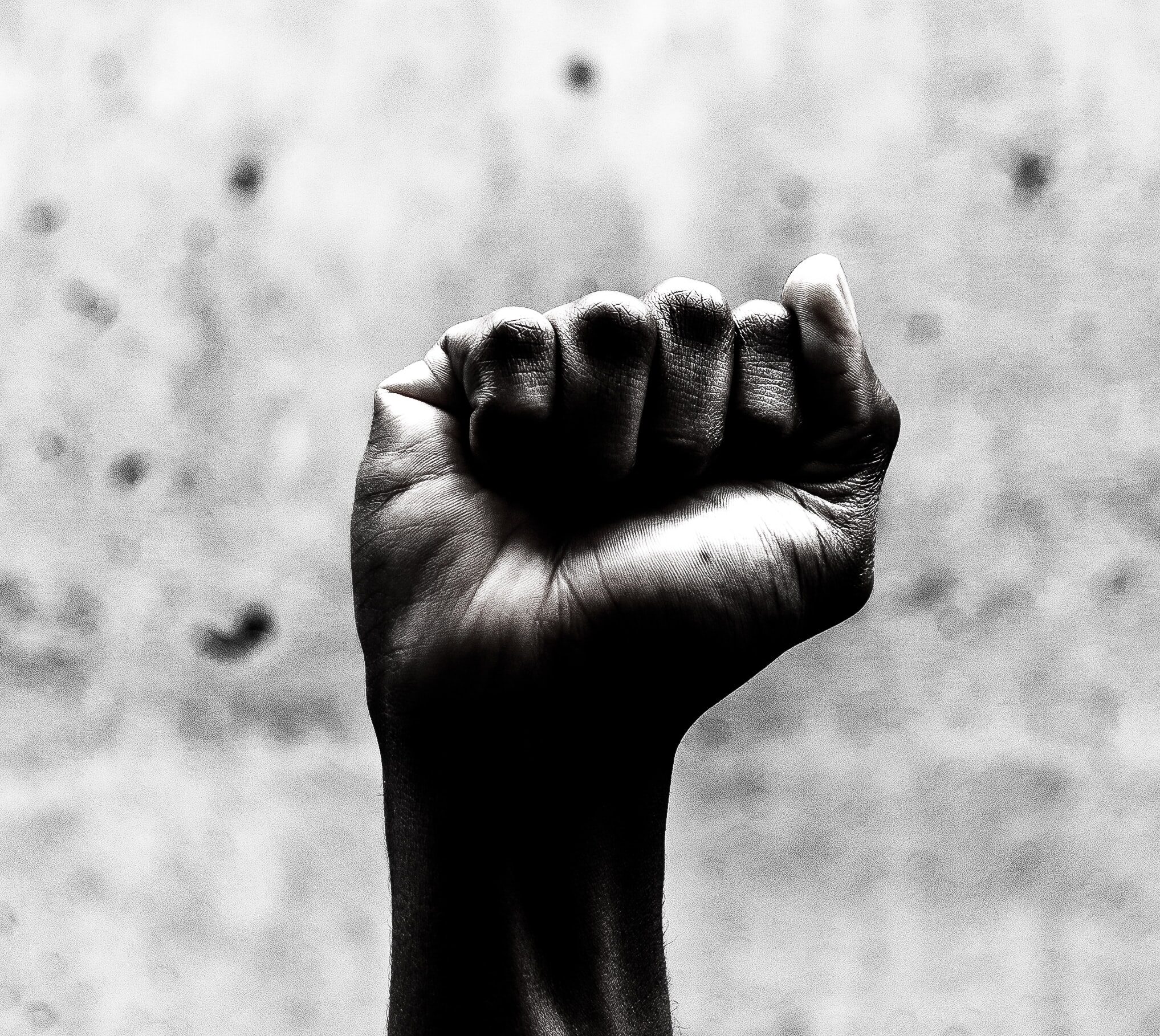
Introdução
Quando fui selecionada para participar do Acampamento de Liderança da LALA, senti uma mistura de sentimentos ambivalentes: extrema felicidade por mais uma conquista e medo do novo que me aguardava. Mas, como aprendi a fazer com toda oportunidade, aproveitei-a apesar de toda a insegurança.
Como uma jovem negra do nordeste do Brasil, dar o primeiro passo para me candidatar a um programa de desenvolvimento de liderança na América Latina não foi fácil nem intuitivo, pois tive que traçar um caminho desconhecido. O que era uma inscrição? Eu encontraria pessoas nordestinas, negras e de minorias? A empolgação com essa nova oportunidade coexistia proporcionalmente com a incerteza sobre o ambiente e as pessoas. No entanto, apesar de enfrentar essas possibilidades, as regras de uma sociedade refletida pela colonialidade, como pessoa negra, dei mais um passo em direção ao novo.
Depois de sete dias intensos e transformadores em São Paulo, conheci mais de trinta jovens de todas as partes do Brasil, todos com suas particularidades que os tornavam distintos, mas semelhantes no objetivo de liderar a mudança em suas comunidades. Finalmente, retornei a Salvador, certo de que encontraria a educação pela qual queria trabalhar e consciente de que precisaria desconstruir várias barreiras para alcançar jovens com uma realidade análoga à minha. Minhas preocupações coincidiam com as de outros jovens negros da comunidade. A partir desse entusiasmo com a mudança, criamos uma solução de acesso que, "de nós para nós", abraçasse, ouvisse e cocriasse.
Uma mudança de dentro para fora
Um ano após minha experiência no acampamento, como membro da comunidade LALA, eu me via como parte de um ecossistema cheio de oportunidades que, apesar de cobrir o continente, não alcançava pessoas de lugares como o meu. Aspectos como idioma (inglês na época) e acessibilidade perpetuavam na minha comunidade os mesmos ciclos de desigualdade (racismo estrutural e disparidade econômica) presentes na sociedade em geral. Determinado a tornar a comunidade da LALA mais "minha" e aberta às nossas realidades, juntamente com outro aluno , Alan Rodrigues, criamos o Programa de Apoio à Inscrição para jovens negros, indígenas e de minorias. Seguindo as etapas do processo de admissão - o envio de redações, um vídeo e a realização de uma entrevista - o Programa auxilia os candidatos em todas as etapas para lidar com os desafios que enfrentam, garantindo que eles permaneçam no processo e tenham a chance de ingressar na LALA.
O protótipo
Agimos rapidamente e começamos no meio de um processo de admissão para viabilizar nosso projeto o mais rápido possível. Primeiro, eu, juntamente com o apoio da LALA e dos participantes, usei minha própria experiência e busquei os desafios enfrentados nas comunidades que queríamos atingir para gerar soluções que abordassem os principais pontos problemáticos de nosso público. Depois, fizemos isso acontecer.
O desenvolvimento do Programa de Apoio à Inscrição para jovens negros, indígenas e de minorias foi um processo de canalização da criatividade e da resistência em prol de uma solução que abraçasse nosso público. Por meio de um processo humanizado, conhecemos os jovens sonhadores, suas histórias e seus territórios - todos os pontos centrais para conduzir a mudança e transformar as comunidades.
Com menos de um mês para tornar o Programa uma realidade, começamos pelas questões mais críticas: recursos informativos e acompanhamento pessoal. Esse movimento não seria possível sem pensar em ambos os níveis, individual e coletivo (como uma comunidade). Depois, esse primeiro esboço nos ensinou que precisávamos investir em mentoria, webinars e workshops, e ações para reter as pessoas - para um problema estrutural, uma solução completa.
Três pilares construíram a base do projeto:
- Comunicação: em um primeiro momento, organizamos um processo de comunicação que fosse representativo e acessível à realidade dos jovens. A partir daí, atingimos mais de 30 jovens negros e periféricos das regiões nordeste, sudeste e centro-oeste do Brasil.
- Comunidade: com esse grupo inicial, realizamos webinars e chamadas abertas para desenvolver um propósito e um senso de coletividade com os jovens durante o processo de inscrição. Abordamos tópicos que abrangeram o processo de inscrição , dúvidas e propostas de temas, como autoestima, autoconhecimento, narração de histórias e narrativa.
- Mentoria: usamos o formato de mentoria para alcançar os candidatos individualmente durante o processo de autodescoberta e autoafirmação necessário para o Inscrição. Por meio desse contato, apoiamos os jovens e nos aproximamos ainda mais de suas realidades e desafios.
Sabíamos que o que começamos com a primeira edição do Programa de Apoio não poderia ser interrompido - tendo alcançado mais de 30 jovens (15 deles foram aprovados para os Acampamentos Virtuais). A primeira ação provou que é possível impactar nossa comunidade e trazer mais representatividade e diversidade, o que viabilizou a tomada de medidas institucionais relacionadas ao processo de admissão, à permanência das pessoas e às parcerias estratégicas. A partir dessa experiência, a LALA desenvolveu parcerias com organizações como Anaí (organização indígena), Gerando Falcões e Redes de Maré, fortalecendo nosso compromisso com a inclusão de indígenas e minorias.
O impacto dessas mudanças não se limitou aos jovens diretamente afetados pelo programa. Foi o pontapé inicial de uma transformação sistêmica da LALA. Com o tempo, o Programa de Apoio à Inscrição ganhou mais espaço e se estabeleceu como uma iniciativa bem-sucedida de ex-alunos, mobilizando mais mentores - negros, indígenas e aliados. O programa revolucionou diretamente a nossa comunidade de líderes latino-americanos. Ele teve efeitos em várias áreas: auxílio financeiro, envolvimento de ex-alunos, cultura e seleção da comunidade e distribuição de oportunidades.
Principais lições
Um ano e meio após a primeira edição, contamos agora com uma estrutura de 25 mentores treinados. Foram alcançados 232 jovens durante a fase de acompanhamento, dos quais 103 se candidataram e 58 foram aprovados para os Acampamentos LALA: pessoas como a mineira Maria Eduarda, de 20 anos, a baiana Karina Tumbalalá e a paulista Danielly Poá. O programa é muito mais estruturado, com funções internas de comunicação, currículo e gestão de pessoas; além disso, como programa, trabalhamos com mentorias, webinars e ações de retenção. Entre as principais lições extraídas dessa experiência estão:
- "Você não pode ser o que não pode ver": como um dos desafios centrais, a representatividade foi uma das primeiras barreiras enfrentadas pelos jovens. Uma vez que eles não se viam em nossas comunicações, como poderiam acreditar em participar de nossa comunidade? Portanto, era essencial garantir uma estratégia de comunicação representativa que falasse com a diversidade da juventude latino-americana.
- A mudança estrutural requer medidas estruturais: o Programa de Apoio à Inscrição representou um primeiro passo emergencial para uma questão profunda que não existe apenas na LALA. Entretanto, as medidas necessárias para superar esse problema devem começar de dentro para fora. Portanto, entender os principais pontos problemáticos e as etapas estruturais para resolvê-los foi vital para estabelecer um plano estratégico que atingisse não apenas os candidatos, mas que também trouxesse mudanças para a estrutura interna da organização.
- Co-criação e comunidade: por ser uma iniciativa criada e executada pela comunidade de ex-alunos, o Programa inclui uma construção dinâmica baseada em processos de melhoria contínua e co-criação. Entendemos que todo voluntário tem espaço para crescimento e protagonismo durante o processo de execução, inovação e resolução de problemas, podendo impactar a iniciativa. Além disso, incentivamos um sistema de apoio para que os protegidos se tornem mentores, multiplicando o impacto e reforçando nosso senso de propósito e comunidade.
- Documentação da jornada, coleta de feedback e melhoria contínua: ao final de cada temporada, realizamos um processo interno para capturar todas as informações relevantes sobre os resultados do Programa, como o número de jovens alcançados, desistências e tópicos relacionados aos principais desafios dos jovens durante o processo de admissão. Isso nos permitiu avaliar os pontos fortes e fracos a serem considerados nas temporadas seguintes e planejar outras ações relacionadas ao DEIA na LALA.
Conclusão
Como uma comunidade de jovens líderes latino-americanos, representamos várias realidades acompanhadas de pontos fortes e desafios. Como parte da mudança, trabalhamos constantemente com a LALA para quebrar ciclos e promover oportunidades para que os jovens desenvolvam todo o seu potencial. Nosso movimento é caracterizado não apenas por uma determinada estrutura interna, mas também por uma crença coletiva e filosófica no apoio, na comunidade e no crescimento.
Como um programa, o Programa de Apoio à Inscrição surgiu como uma necessidade urgente de mudança, levando a LALA, como organização, a repensar profundamente suas estruturas internas. Hoje, algo que começou com dois ex-alunos está agora enraizado na comunidade, no ecossistema e nos departamentos da organização. Nosso impacto cresce a cada temporada à medida que cada novo aluno apoiado se junta à LALA por meio do caminho que traçamos; estamos ansiosos para realizar nosso propósito de transformar nossa comunidade em um lugar que realmente represente a diversidade da América Latina.
Três anos depois de entrar na LALA, vejo que nós, os jovens, também estamos transformando a comunidade com nossas próprias mãos. Hoje, entendo que nenhum jovem enfrentará meus desafios porque mudamos a realidade e incentivamos ativamente o protagonismo de cada jovem.
Esta é uma história escrita por Tássia de Matosmembro da Equipe DEIA da LALA. Foto de Oladimeji Odunsi em Unsplash.
